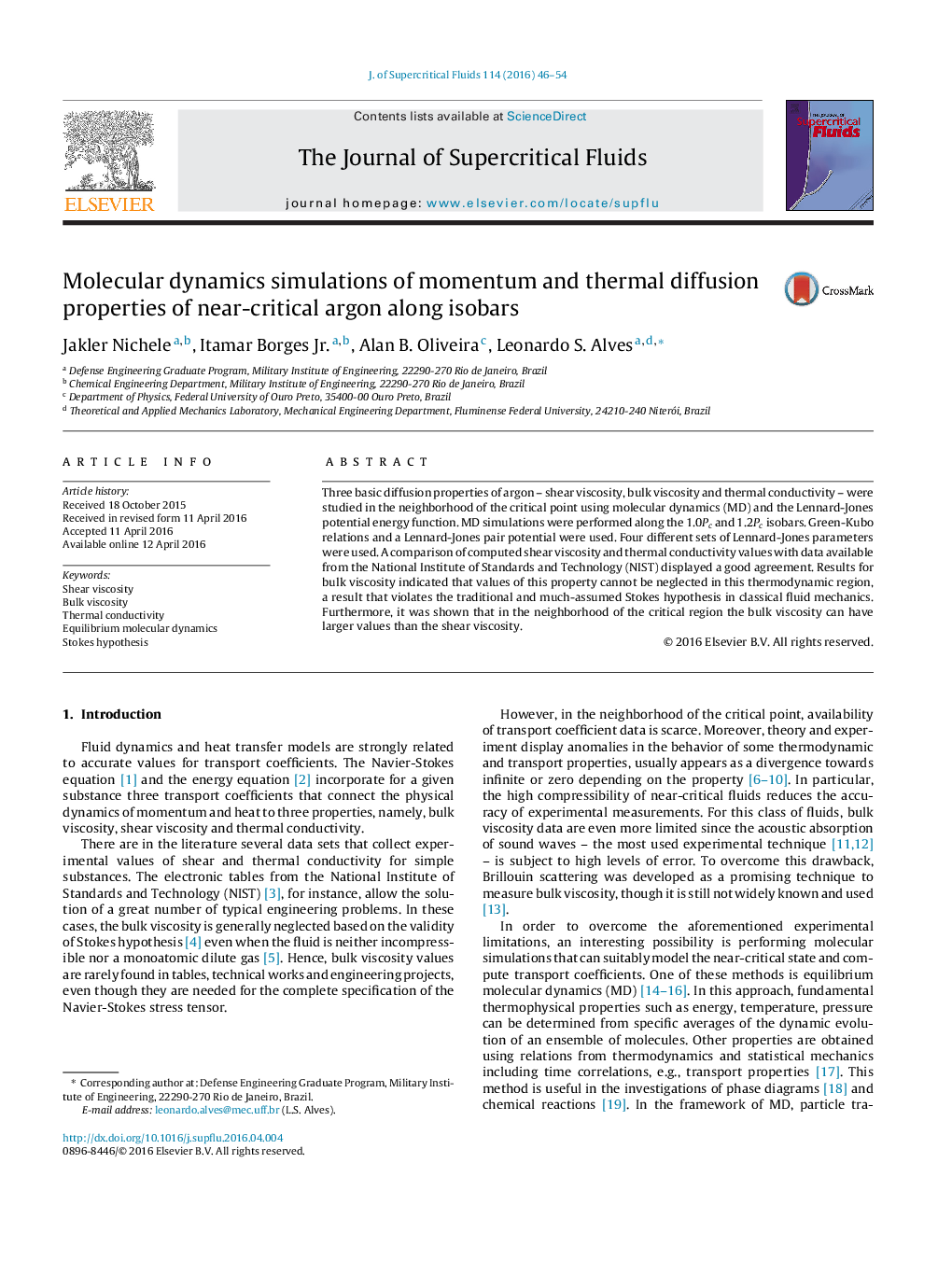| Article ID | Journal | Published Year | Pages | File Type |
|---|---|---|---|---|
| 230051 | The Journal of Supercritical Fluids | 2016 | 9 Pages |
•Transport properties of argon were studied near its critical point.•Equilibrium molecular dynamics simulations showed the critical divergences.•Shear viscosity and thermal conductivity were in good agreement with NIST data.•Bulk viscosity can be larger than shear viscosity in the near critical region.•The Stokes hypothesis is not valid in the near critical region.
Three basic diffusion properties of argon – shear viscosity, bulk viscosity and thermal conductivity – were studied in the neighborhood of the critical point using molecular dynamics (MD) and the Lennard-Jones potential energy function. MD simulations were performed along the 1.0Pc and 1.2Pc isobars. Green-Kubo relations and a Lennard-Jones pair potential were used. Four different sets of Lennard-Jones parameters were used. A comparison of computed shear viscosity and thermal conductivity values with data available from the National Institute of Standards and Technology (NIST) displayed a good agreement. Results for bulk viscosity indicated that values of this property cannot be neglected in this thermodynamic region, a result that violates the traditional and much-assumed Stokes hypothesis in classical fluid mechanics. Furthermore, it was shown that in the neighborhood of the critical region the bulk viscosity can have larger values than the shear viscosity.
Graphical abstractFigure optionsDownload full-size imageDownload as PowerPoint slide
